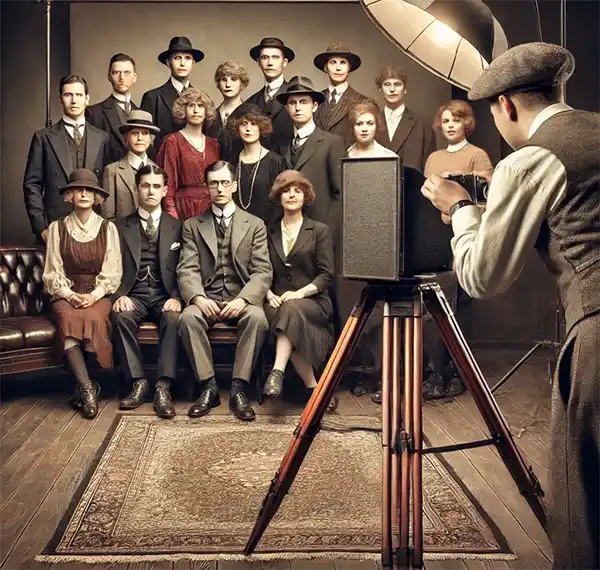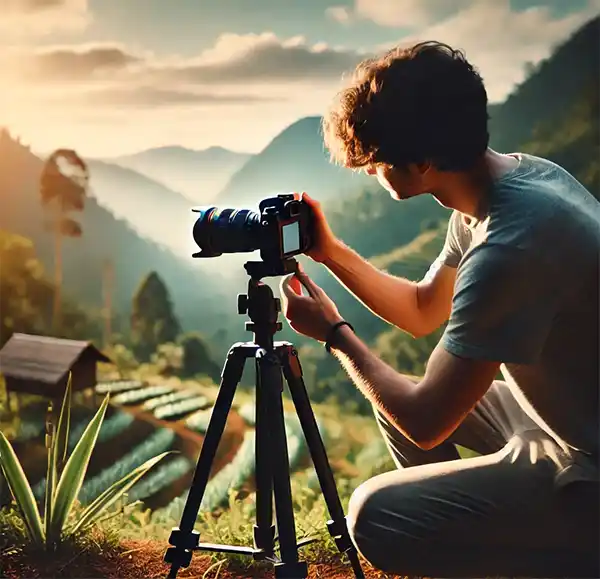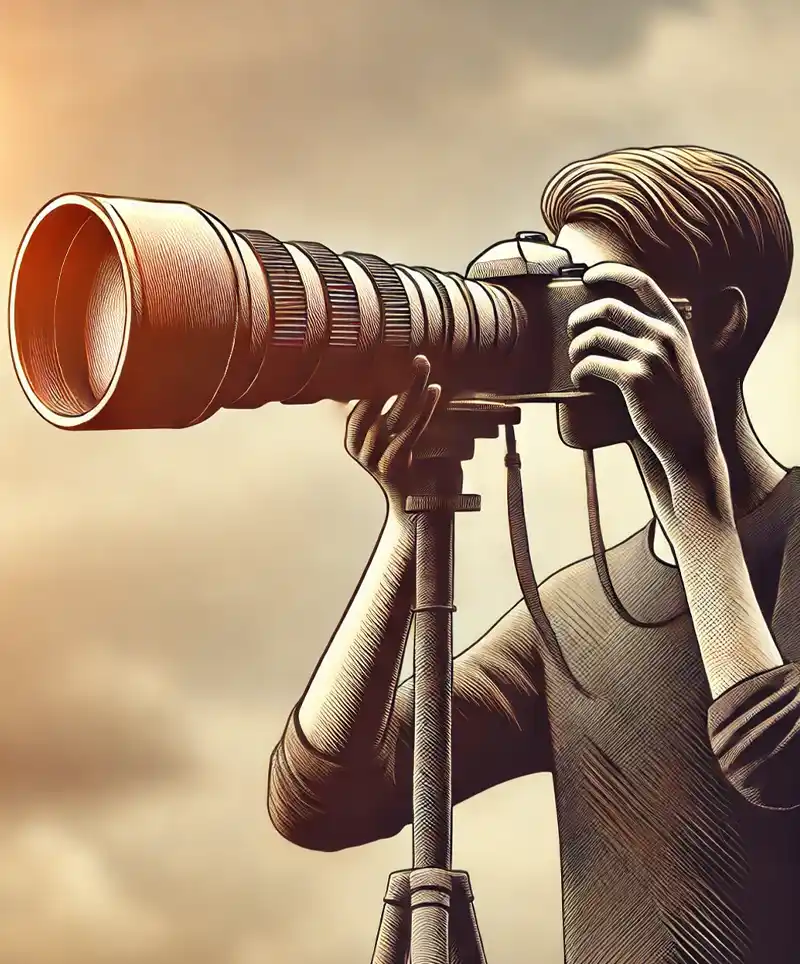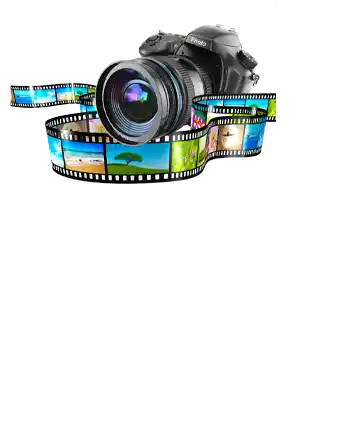Snap, Click, and Capture the Magic!
Every year on June 29th, we celebrate a device that has transformed the way we see the world and capture memories: the camera. National Camera Day is dedicated to honoring this marvelous invention, which has evolved from bulky, boxy contraptions to sleek, pocket-sized wonders. So, grab your camera (or smartphone) and get ready to snap, click, and capture the magic of life!
A Flashback in Time
The history of the camera is a fascinating journey that reflects humanity’s relentless pursuit of innovation and creativity. It all began with the camera obscura, a concept dating back thousands of years. Early versions were little more than darkened rooms or portable boxes with a small hole, projecting an inverted image of the outside world onto a flat surface. Ancient Chinese philosopher Mozi and later, 11th-century Arab scientist Alhazen, both described the principles behind this optical marvel. Though it couldn’t capture images, the camera obscura laid the groundwork for what was to come.
 The leap from projection to preservation came with Joseph Nicéphore Niépce, who, in the 1820s, successfully created the world’s first permanent photograph. His heliograph, or "sun writing," was a labor of patience and persistence, requiring an eight-hour exposure on a pewter plate coated with bitumen. Imagine the excitement—and relief—when Niépce looked at his work and realized he had captured a grainy but indelible view from his window.
The leap from projection to preservation came with Joseph Nicéphore Niépce, who, in the 1820s, successfully created the world’s first permanent photograph. His heliograph, or "sun writing," was a labor of patience and persistence, requiring an eight-hour exposure on a pewter plate coated with bitumen. Imagine the excitement—and relief—when Niépce looked at his work and realized he had captured a grainy but indelible view from his window.
Just a few years later, Louis Daguerre took photography to the next level. In 1839, he unveiled the daguerreotype, which dramatically reduced exposure times and produced clearer, more detailed images on silver-plated copper sheets. It was a dazzling breakthrough, and people were mesmerized by the ability to immortalize their likenesses. Daguerre’s invention spread like wildfire, with studios popping up in cities worldwide. Portrait photography became a sensation, and society’s obsession with selfies began long before smartphones.
As the 19th century marched on, George Eastman changed the game entirely. His 1888 Kodak camera introduced the concept of roll film and brought photography to the masses. No longer a privilege of professionals and the wealthy, photography became a hobby for anyone with $25 (equivalent to about $750 today). Eastman’s slogan, “You press the button, we do the rest,” captured the spirit of the era—photography was no longer a tedious, technical process but an everyday joy.
The 20th century saw an explosion of advancements. Compact 35mm cameras, pioneered by Leica in 1925, offered portability and professional-level results. Meanwhile, Polaroid instant cameras brought photography into the realm of instant gratification in the 1940s and 1950s, letting users hold their memories in hand mere moments after clicking the shutter.
Then came the digital revolution of the late 20th century. Cameras became electronic marvels, shedding film for memory cards and allowing photographers to shoot, delete, and reshoot to their hearts’ content. By the time smartphones entered the picture in the early 21st century, nearly everyone had a high-quality camera in their pocket. A snapshot was no longer just a keepsake; it became a way to connect, share, and even influence the world in real-time.
Each step in the camera’s evolution represents not just technological progress but also humanity’s desire to preserve, share, and celebrate life’s fleeting moments. From the shadowy rooms of the camera obscura to the sleek digital devices of today, cameras have captured our imaginations as much as they have our images.
The Evolution of Cameras
Cameras have come a long way since those early days. The bulky, film-loaded devices of the past have evolved into digital cameras, offering unparalleled convenience and image quality. Here’s a quick rundown of the camera’s evolution:
- Daguerreotypes: These were the first commercial cameras, requiring long exposure times and a steady hand. They produced stunningly detailed images on silver-plated copper sheets.
- Box Cameras: Eastman’s Kodak cameras were simple, boxy devices that made photography accessible to everyone. They used roll film and were the first to truly popularize amateur photography.
- 35mm Cameras: The introduction of the Leica camera in 1925 revolutionized photography again. These compact cameras used 35mm film, offering high-quality images and portability.
- Instant Cameras: Polaroid’s instant cameras, introduced in the mid-20th century, allowed users to snap a photo and watch it develop right before their eyes. Talk about instant gratification!
- Digital Cameras: The advent of digital technology transformed photography. No more film, no more waiting for development – just instant results and limitless possibilities.
- Smartphone Cameras: Today, almost everyone carries a high-quality camera in their pocket. Smartphones have made photography more accessible than ever, allowing us to capture and share moments instantly.
 Say Cheese! The Joy of Photography
Say Cheese! The Joy of Photography
Photography isn’t just about preserving memories; it’s an art form that allows us to express ourselves, tell stories, and see the world from new perspectives. Whether you’re a professional photographer or a casual snapper, there’s a certain joy in capturing a perfect moment.
Think about the last time you took a photo. Maybe it was a breathtaking sunset, a candid shot of friends laughing, or your cat doing something adorably ridiculous. Each photo is a little piece of magic, a moment frozen in time.
On National Camera Day, why not challenge yourself to see the world through a different lens? Try macro photography and discover the intricate beauty of everyday objects. Experiment with long exposure to capture the mesmerizing trails of city lights. Or go old school and shoot in black and white to evoke a sense of nostalgia and timelessness.
Fun Facts and Trivia
- First Photograph: The first permanent photograph, titled "View from the Window at Le Gras," was taken by Joseph Nicéphore Niépce in 1826 or 1827. It took about eight hours of exposure time!
- Oldest Surviving Photo of a Human: Louis Daguerre’s 1838 daguerreotype of a Paris street scene accidentally captured a man getting his shoes polished, making him the first person ever photographed.
- Selfie Mania: The first recorded selfie was taken by Robert Cornelius, an American pioneer in photography, in 1839. He had to sit still for about 15 minutes!
- Camera Obscura: The concept of the camera obscura was described by Chinese philosopher Mozi as early as the 5th century BCE. Talk about foresight!
- Instant Success: Polaroid’s instant cameras were so popular in the 1970s that the company struggled to keep up with demand, selling millions of units each year.
Capture the Moment
National Camera Day is the perfect excuse to unleash your inner photographer. Here are a few ideas to get you started:
- Photo Walk: Take a stroll around your neighborhood or a local park and capture the beauty of everyday scenes.
- Portraits: Snap candid photos of family and friends. Don’t forget to capture those goofy, unguarded moments!
- Nature Shots: Head to the great outdoors and photograph the stunning landscapes, flora, and fauna.
- Experiment: Try out different techniques like long exposure, macro, or black and white photography.
Remember, the best camera is the one you have with you. Whether it’s a high-end DSLR or your trusty smartphone, what matters most is your creativity and perspective. So, on this National Camera Day, go out there and capture the magic – one click at a time.
Please Share our Content






 The leap from projection to preservation came with Joseph Nicéphore Niépce, who, in the 1820s, successfully created the world’s first permanent photograph. His heliograph, or "sun writing," was a labor of patience and persistence, requiring an eight-hour exposure on a pewter plate coated with bitumen. Imagine the excitement—and relief—when Niépce looked at his work and realized he had captured a grainy but indelible view from his window.
The leap from projection to preservation came with Joseph Nicéphore Niépce, who, in the 1820s, successfully created the world’s first permanent photograph. His heliograph, or "sun writing," was a labor of patience and persistence, requiring an eight-hour exposure on a pewter plate coated with bitumen. Imagine the excitement—and relief—when Niépce looked at his work and realized he had captured a grainy but indelible view from his window. Say Cheese! The Joy of Photography
Say Cheese! The Joy of Photography








 "Sláinte!" is a traditional Irish expression used as a toast, equivalent to "Cheers!" in English.
"Sláinte!" is a traditional Irish expression used as a toast, equivalent to "Cheers!" in English.